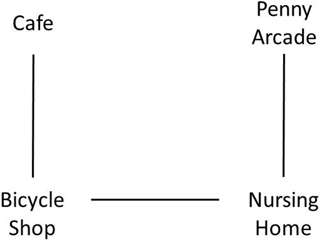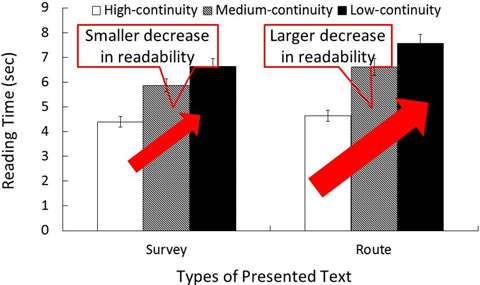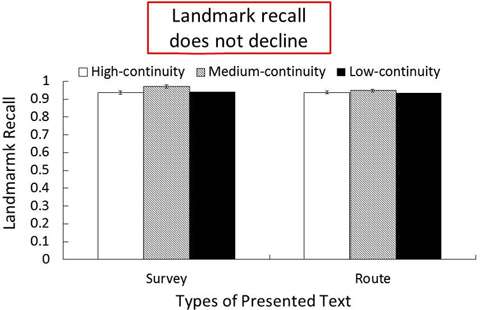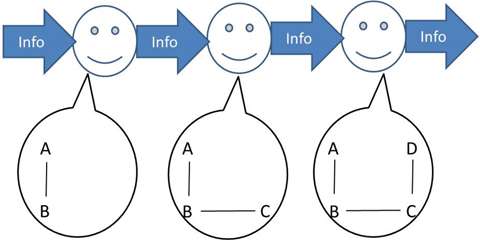Linguistic cognition of spatial information

Japanese researchers examined the effect of sentence order on the comprehension of spatial information. They found that it is important for the text to be written in the same order as in the situation we walk. The study has been published in "Cognitive Processing," an international journal in the field of cognitive science.
Despite the fact that spatial information is visual, we express it verbally in many situations daily, such as providing directions to a person. Spatial information can be verbally expressed in two ways: the survey perspective (e.g., the library is in the south of the Faculty of Education), and the route perspective (e.g., you can find the library after you go out of the Faculty of Education and turn left). Previous studies demonstrated that the information was processed differently in both these perspectives. However, the specific process of organization of spatial information, such as "from the park to the post office," and "from the post office to the station," had not been fully examined.
The present study showed that when we memorize spatial relationships from sentences, it is important to read the sentence in the order in which we would walk along the same route, especially for the route perspective. This means that when we process the spatial relationships from the verbal expression, we comprehend it according to the way it is expressed.
Forty-eight students read a three-sentence text about the presented environment, as in Fig. 1, and immediately drew a map of the same. The text that was presented was based on one of the following three conditions: (1) the high-continuity condition, in which the sentences described the buildings in an order identical to the actual locomotion, (2) the medium-continuity condition, in which the sentences described the buildings in an order different from the actual locomotion. Each sentence, however, had significant connections between the previous and next sentence, such that the readers could grasp the spatial relationship between landmarks after they read each sentence, and (3) the low-continuity condition, in which the sentences described the buildings in an order different from the actual locomotion. In addition, there was no significant connection between sentences, and the participants had to read all three sentences to comprehend their spatial relationship.

Results revealed that with a decline in the text continuity, participants found it more difficult to comprehend the spatial relationship from the text. In addition, this increase in difficulty was larger in the route perspective (Fig. 2). Further, it was observed that when participants remembered the names of the landmarks without their location, their performance did not decrease. This indicates that the decrease in the performance was not due to the overall decline in the readability of the text (Fig. 3).

These findings indicate that when we use the survey or the route perspective, we cognitively construct the maps in different ways. Specifically, to grasp the spatial relationships in sentences, it is important that they be connected to each other, especially when the route perspective is used. This means that similar to the way in which we walk along a route, we construct a mental map of the space in a step-by-step manner, rather than in one shot (Fig. 4).
The research group will try to apply the findings of the present study to develop a better spatial information communication technique, such as an easy-to-understand audio and textual guide.

More information: Masashi Sugimoto, Takashi Kusumi. "The effect of text continuity on spatial representation: route versus survey perspective" Cognitive Processing Published online 13 October 2013. dx.doi.org/10.1007/s10339-013-0582-0















